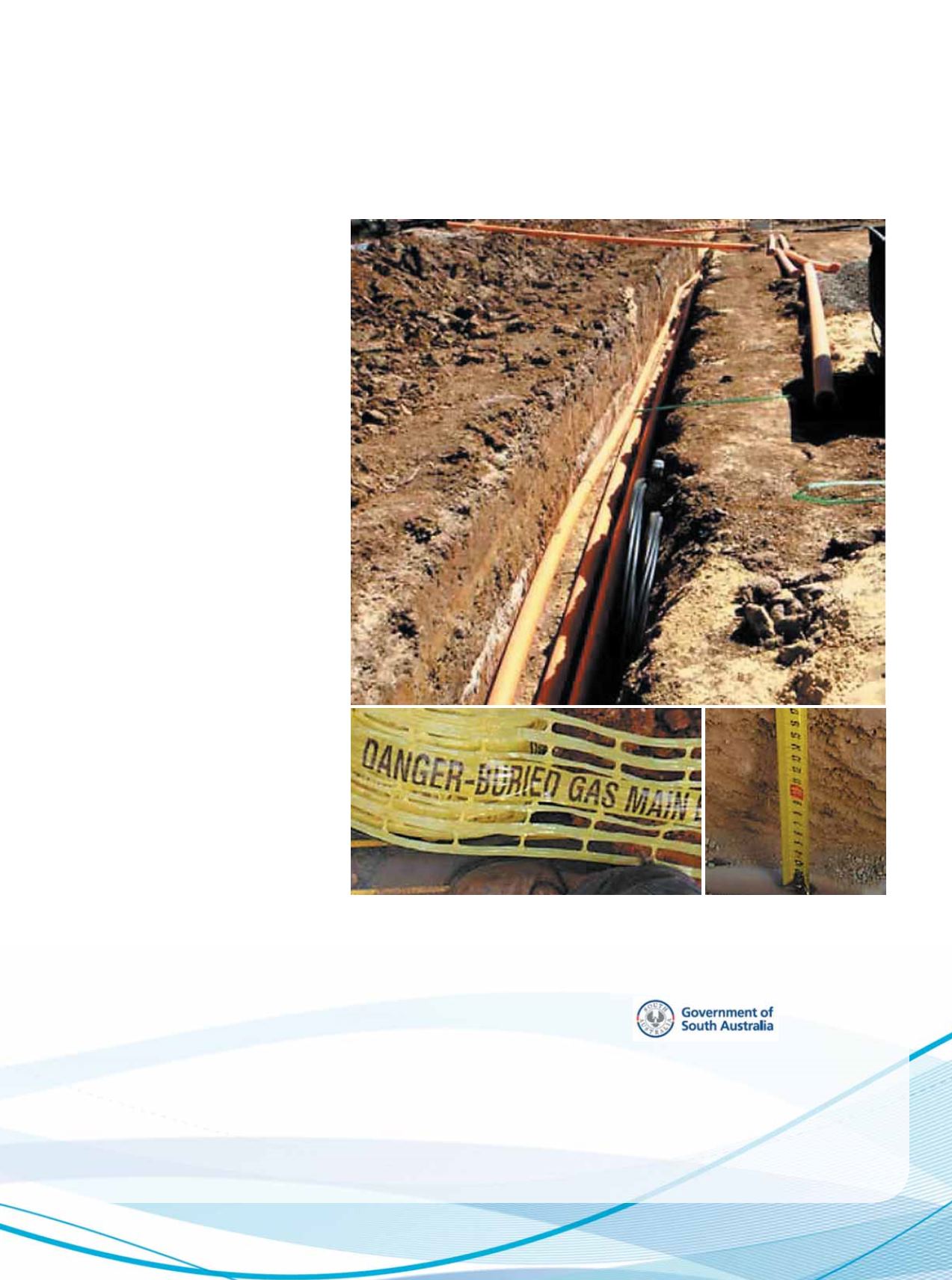

www. e l e c t r i c a l c o nn e c t i o n . c om . a u
7 9
location company. If you are using your own
locating equipment, it is important to ensure
that the operators are trained in its use and
are aware of its limitations. In addition, the
equipment must be calibrated and capable
of detecting all types of cables and pipes as
necessary. Some locating equipment may not
detect an electric cable unless there is current
flowing and may not be able to detect non-
metallic pipes or conduits. Note: It is common
for gas assets to be laid in polyethylene (PE)
pipe (yellow or black with yellow stripes).
Generally PE pipe is laid with detectable (foil
backed) marker tape or non-detectable marker
tape and a tracer wire, but this is not always
the case.
Check location with a pilot or trial hole
Once the asset location has been
determined, a pilot or trial hole should be used
to establish the exact location and depth of the
asset. Using insulated hand tools is considered
a safe method for excavation, but they can also
be a common source of accidents and cause
damage to the asset if used incorrectly. This is
sometimes referred to as pot-holing.
Other safe methods of excavating include
water jetting and high-velocity air jets
incorporating vacuum removal of excavated
soil to expose buried assets. Their use may be
limited by the ground conditions and soil type.
Precautions are also needed to prevent injury
from ejected soil. Whichever method is chosen,
you need to apply it with care. Before digging or
water jetting near a high voltage electrical cable,
check with your local network provider, if there
are any special conditions that apply.
Machinery – dig at a safe distance
Once an asset location has been
determined, excavation may proceed.
Every effort should be made to excavate
alongside the asset rather than directly
above it. Extreme care should be taken when
digging above or close to the determined
asset location. Marker tape is commonly
used as a location indicator for buried pipes
and cables. If a marker tape is found, use
extreme caution if you continue digging.
Hand-held power tools and mechanical
excavators must be used with extreme
care when working close to underground
assets. A risk assessment should be used
to determine the minimum safe working
distance for powered tools and excavators
from the underground assets. Final exposure
of the asset by horizontal hand digging is
recommended; as the force applied to hand
tools can be controlled more effectively.
Insulated tools (e.g. spades and shovels,
preferably with curved edges) should be used
when hand digging near electric cables. They
should not be thrown or spiked into the ground,
but eased in with gentle foot pressure.
Information sourced from:
For further information, contact Rory
Sweeney, HSEQ Manager for NECA on
02 8272 2966, or email rory.sweeney@
necasa.asn.au.
Alternatively a copy of the WHS Regulations
can be downloaded from the SafeWork SA
website at
www.safework.sa.gov.au.Top: Trenching and laying of new pipes and cables. Left: Non-metallic gas pipe marker.
Right: Cable at incorrect depth.
















